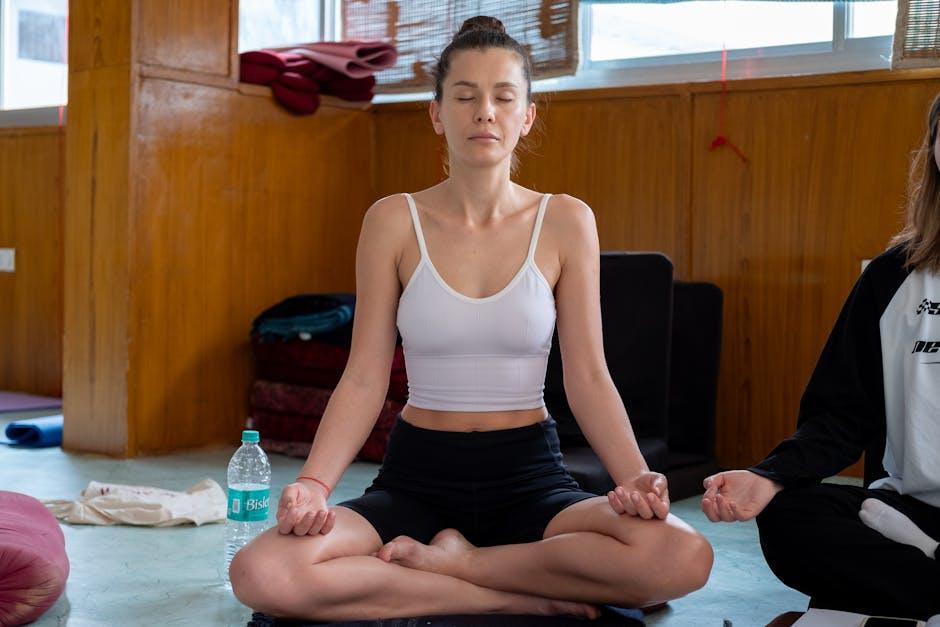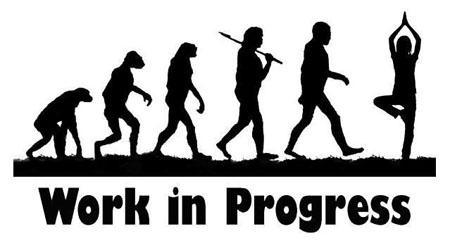In the serene silence of dawn, as the first light gently kisses the earth, millions around the world unfurl their yoga mats, preparing to engage in a practice that has transcended time and culture. Yoga, a word that resonates with peace, balance, and introspection, has woven its way through the fabric of human history, evolving in form and philosophy over centuries. From its mystical origins in ancient India to its widespread adoption as a global wellness phenomenon, yoga’s journey is a testament to its enduring appeal and adaptability. This article delves into the fascinating evolution of yoga practices, exploring how this ancient discipline has continually reshaped itself to meet the spiritual, physical, and cultural needs of each era. Join us as we unravel the threads of yoga’s rich tapestry, tracing its path from sacred rituals to contemporary fitness studios, and discover how this timeless practice continues to inspire and transform lives across the globe.
Tracing Ancient Roots to Modern Adaptations
Yoga, an ancient practice that traces its origins back to the Indus Valley civilization, has undergone a fascinating transformation over the centuries. From its initial roots as a spiritual and ascetic discipline, it has blossomed into a globally embraced practice that caters to a diverse range of needs. Ancient texts like the Vedas and the Upanishads laid the groundwork, emphasizing meditation and breath control. Over time, these spiritual practices evolved, integrating physical postures that are now synonymous with modern yoga. This evolution was not just a simple addition of new techniques but a response to the cultural and societal shifts that demanded more tangible health benefits and stress relief.
In today’s world, yoga has been adapted to suit contemporary lifestyles, becoming an integral part of wellness and fitness routines. Modern adaptations include:
- Power Yoga: A vigorous, fitness-based approach focusing on strength and flexibility.
- Hot Yoga: Practiced in heated rooms to replicate the climate of India, promoting detoxification and flexibility.
- Yin Yoga: A slower-paced style, targeting deep connective tissues and promoting relaxation.
- Aerial Yoga: Combines traditional yoga with aerial arts, offering a unique perspective on balance and gravity.
These contemporary forms of yoga reflect the adaptability of the practice, showcasing its enduring relevance in a fast-paced modern world while honoring its profound historical roots.

Cultural Influences and Global Spread
The journey of yoga from its ancient roots in India to its current status as a global phenomenon is a testament to its adaptability and universal appeal. Throughout history, yoga has absorbed influences from diverse cultures, each adding unique elements to its practice. The early forms of yoga, deeply intertwined with Indian philosophy and spirituality, emphasized meditation and mental discipline. As it crossed borders, yoga began to incorporate physical postures, or asanas, influenced by Western gymnastics and physical culture movements. This evolution is evident in the rise of modern yoga styles like Vinyasa and Ashtanga, which prioritize fluid movement and physical prowess.
- Western Influence: Integration of fitness and wellness concepts, emphasizing physical health.
- Eastern Philosophies: Retention of meditation and mindfulness practices, focusing on mental clarity and spiritual growth.
- Global Adaptation: Development of diverse styles such as Power Yoga and Bikram Yoga, catering to varying preferences and lifestyles.
The global spread of yoga has also been facilitated by technology and media, allowing practitioners worldwide to access teachings and connect with a broader community. Online platforms and social media have played a crucial role in popularizing yoga, making it accessible to people from all walks of life. This cultural exchange has not only enriched the practice but also fostered a deeper understanding and appreciation of yoga’s multifaceted nature.
Innovations in Techniques and Teaching Styles
Throughout the centuries, yoga has been a dynamic practice, continually evolving to incorporate new techniques and teaching styles. As it transitioned from ancient Indian traditions to a global phenomenon, the methodologies employed by instructors have seen significant transformation. Today, yoga classes might include a blend of ancient practices and modern innovations, such as:
- Integration of Technology: Modern yoga studios often use apps and online platforms to offer virtual classes, making yoga accessible to people around the world.
- Incorporation of Music: Some contemporary styles, like Vinyasa Flow, incorporate music to enhance the rhythm and flow of the practice, creating a more immersive experience.
- Use of Props: Blocks, straps, and bolsters are now commonly used to modify poses, making yoga more inclusive and adaptable to different body types and abilities.
- Fusion Styles: Innovations such as aerial yoga and SUP yoga (practiced on a stand-up paddleboard) combine traditional postures with new environments and equipment, offering unique challenges and benefits.
Instructors have also adopted diverse teaching styles to cater to varied audiences, from restorative and therapeutic approaches focusing on healing and relaxation to more vigorous and intense styles aimed at building strength and stamina. This versatility ensures that yoga remains relevant and engaging, resonating with practitioners of all ages and backgrounds.
Incorporating Yoga into Contemporary Lifestyles
In today’s fast-paced world, the ancient practice of yoga has seamlessly woven itself into the fabric of modern living, offering a sanctuary of balance and well-being. As people navigate through the demands of contemporary life, yoga has evolved to meet diverse needs and preferences, making it accessible and appealing to a wide audience. This ancient discipline, once reserved for spiritual seekers, now finds its place in urban studios, corporate wellness programs, and even digital platforms, reflecting its adaptability and enduring relevance. With the integration of technology, yoga enthusiasts can now access classes and tutorials from the comfort of their homes, allowing for a personalized and flexible approach to practice.
- Mindfulness and Meditation: Yoga encourages individuals to cultivate mindfulness, a crucial tool for managing stress and enhancing mental clarity in a world filled with distractions.
- Physical Fitness: From power yoga sessions that boost cardiovascular health to gentle restorative practices, yoga caters to various fitness levels and goals.
- Community and Connection: Whether through in-person classes or online forums, yoga fosters a sense of community, connecting like-minded individuals across the globe.
As yoga continues to evolve, it maintains its core principles of unity and harmony, offering a timeless antidote to the chaos of modern existence. By embracing its versatile nature, practitioners can tailor their yoga journey to align with their personal lifestyle, ultimately enriching their quality of life.
The Way Forward
As we roll up our mats and take a deep breath, it’s clear that the journey of yoga is as intricate and diverse as the poses themselves. From its ancient roots in the sacred soils of India to its contemporary manifestations in bustling urban studios, yoga continues to evolve, adapt, and inspire. This enduring practice has woven its way through the tapestry of time, embracing change while holding steadfast to its core principles of unity, mindfulness, and transformation.
In exploring the evolution of yoga practices over centuries, we witness not just the shifts in postures and philosophies, but also the timeless human quest for balance and enlightenment. Yoga’s history is a testament to its resilience and relevance, offering each generation a path to connect with themselves and the world around them.
As we close this chapter, may we carry forward the wisdom of the ages, honoring the past while embracing the possibilities of the future. Let us step into our daily lives with the grace of a warrior, the stillness of a tree, and the openness of a child’s pose—ever curious, ever evolving. Namaste.

